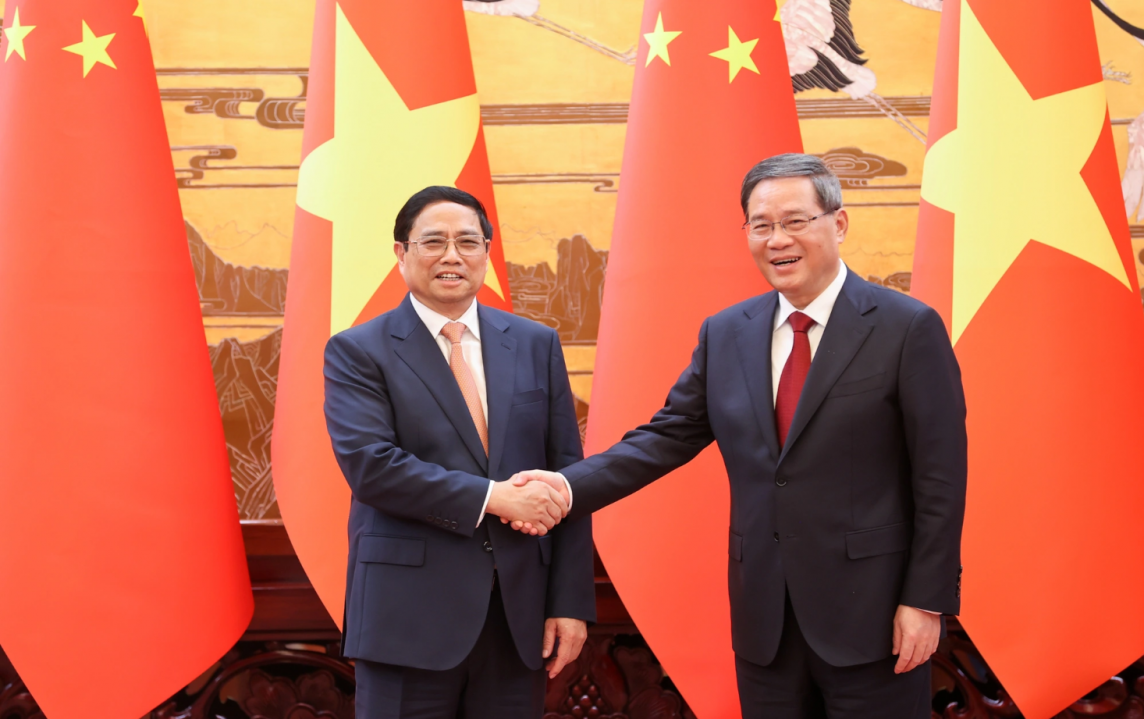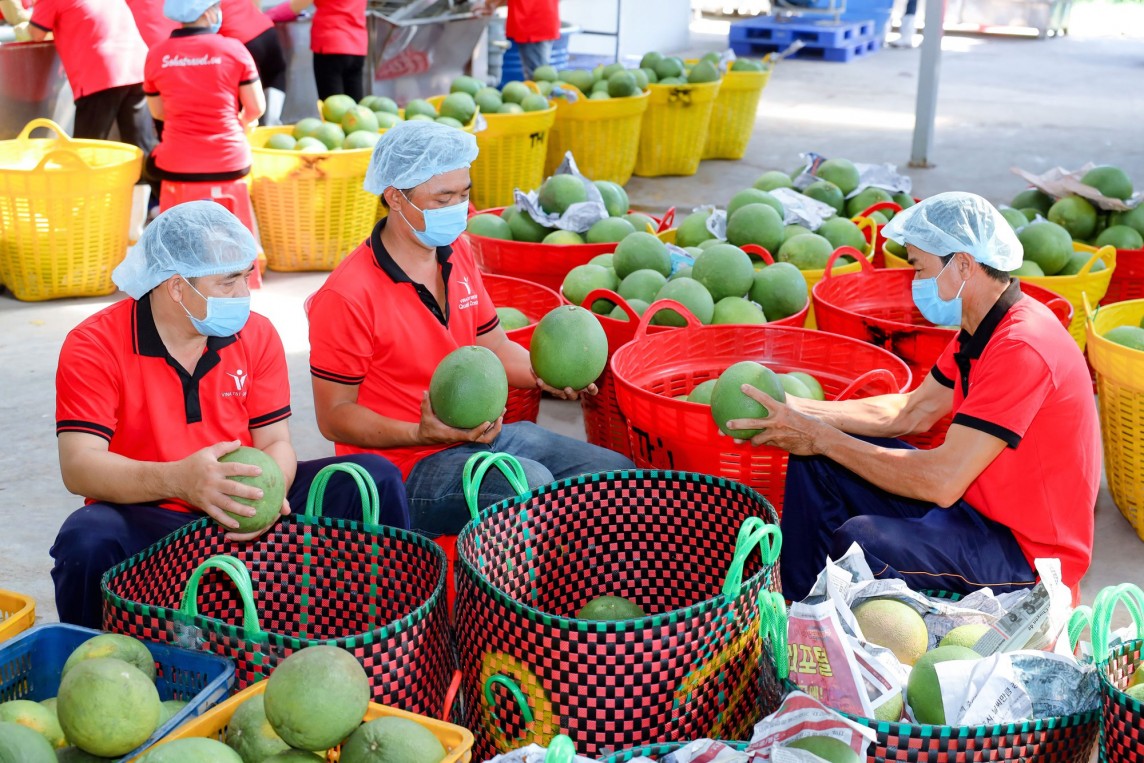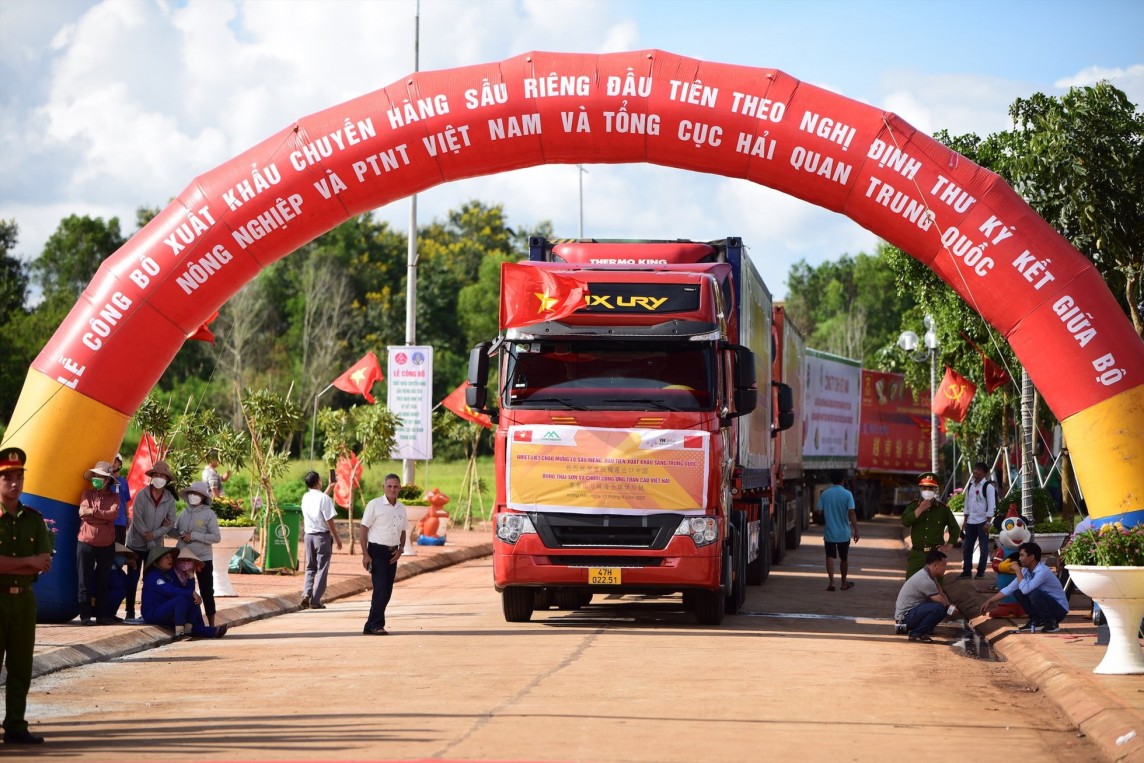Driving force for Vietnam - China bilateral relations
January 18, 1950 has gone down in the history of Vietnam-China relations as an important milestone. Shortly after its establishment, the People's Republic of China was the first country in the world to establish diplomatic relations with the Democratic Republic of Vietnam (now the Socialist Republic of Vietnam).
Over the past 74 years since the establishment of diplomatic relations, Vietnam-China relations have maintained a good momentum of development and achieved many important results; high-level exchanges and contacts have been vibrant. According to assessments, the bilateral relationship between Vietnam and China has gained significant momentum, marked by high-level visits by the two countries' leaders.
Typically, following the official visit to China by General Secretary Nguyen Phu Trong in 2022 (from October 30 to November 1, 2022) and in 2023, many delegations of Vietnamese leaders visited China. In response, from December 12 to 13, 2023, General Secretary and President of China Xi Jinping and his wife paid a State visit to Vietnam, the two sides issued a "Joint Statement on continuing to deepen and elevate the comprehensive strategic cooperative partnership, building a Vietnam-China Community of Shared Future of strategic significance", signing 36 cooperation documents in many fields. Since the beginning of 2024, high-level and all-level exchanges and contacts have continued to take place vigorously with many flexible forms.
 |
| Prime Minister Pham Minh Chinh and Chinese Premier Li Qiang during a meeting in June 2023, during the official visit to China by the head of the Vietnamese Government (Photo: Doan Bac) |
The leader of the Asia-Africa Market Department (Ministry of Industry and Trade) said that Vietnam and China have many similarities, creating favorable conditions for cooperation activities.
Firstly , in terms of political institutions, both countries are led by the Communist Party and are moving towards socialism. Both countries' economies have transformed from a planned subsidy mechanism to a market economy. The cultures of both countries have been intertwined over a very long period of history. These similarities are the most favorable conditions for the two countries to develop diplomatic relations in the past and in the future.
Second, the geographical location is also a great advantage for the two countries to develop trade cooperation. Vietnam and China have a border of more than 1,400 km. Vietnam has 7 provinces from West to East: Dien Bien, Lai Chau, Lao Cai, Ha Giang, Cao Bang, Lang Son and Quang Ninh, bordering the two provinces of Yunnan and the Guangxi Zhuang Autonomous Region of China. Vietnam is a country with many unique agricultural products exported in large quantities, receiving the favor of countries around the world. China is Vietnam's second largest export market, a huge market for agricultural products for Vietnamese farmers.
Citing data from Vietnam Customs, the Asia-Africa Market Department said that Vietnam-China import-export turnover in 2023 reached 171.9 billion USD, down 2.6% compared to 2022. Of which, exports to China reached 61.2 billion USD, up 5.6%, imports from China reached 110.6 billion USD, down 6.6%; trade deficit was 49.4 billion USD, down 18.4%. China continues to be Vietnam's largest trading partner, largest import market and second largest export market.
In the first 5 months of 2024, Vietnam's import-export turnover with China reached 77.5 billion USD, an increase of 25.4% over the same period in 2023.
 |
| In the first 5 months of 2024, Vietnam's import-export turnover with China reached 77.5 billion USD, an increase of 25.4% over the same period in 2023. Illustrative photo |
 |
| The first batch of fresh durian was officially exported to the Chinese market. Illustrative photo. |
According to statistics from the General Administration of Customs of China, China-Vietnam trade turnover in 2023 reached 229.79 billion USD, down 0.5% over the same period in 2022. Of which, China's export turnover to Vietnam reached 137.61 billion USD, down 3.7%; import turnover from Vietnam reached 92.18 billion USD, up 4.8%. Thus, in 2023, Vietnam is China's 5th largest trading partner (by country criteria, after the US, Japan, South Korea, Russia) and China's 7th largest trading partner (by market criteria, after the above partners and Hong Kong, Taiwan). Vietnam continues to be China's largest trading partner in the ASEAN bloc.
In terms of goods, Vietnam exports to China items such as mobile phones, components, electronic equipment, rubber, agricultural products, seafood... and imports from the Chinese market products such as machinery, equipment, raw materials for garment production, leather shoes, iron and steel, construction materials..., as well as daily necessities.
Vietnam - China Industrial Cooperation
In addition to economic and trade cooperation, China is currently an important industrial partner of Vietnam. In particular, construction contracting is currently the main form of cooperation in the fields of energy, heavy industry and chemicals; trade and investment cooperation is mainly in the field of light industry.
In addition, the number of EPC contracts implemented by Chinese contractors in Vietnam is 28 out of a total of 118 packages (accounting for 24%), but the value accounts for 48%, reaching 100,733 billion VND (implemented from 2002-2013). It is noteworthy that packages in the industrial production sector account for a relatively high proportion, such as thermal power accounting for 70.59%, minerals accounting for 87.5%, and chemical fertilizers accounting for 60%. The main source of capital is preferential loans from the Export-Import Bank of China. Along with the adjustment of investment policies, in recent years, the industrial and commercial sector has basically not generated any more public investment projects with problems related to Chinese contractors.
In addition, cooperation in the field of renewable energy between the two countries is also emphasized. In November 2017, the Ministry of Industry and Trade and the National Development and Reform Commission of China signed a Memorandum of Understanding on cooperation in the field of electricity and renewable energy. In this Memorandum, the two sides set out a number of key principles to facilitate agencies and enterprises to implement cooperation in the field of electricity and renewable energy. Currently, the two sides are jointly researching and developing specific plans to implement the contents of the Memorandum.
China is the 6th largest investor in Vietnam.
By the end of 2023, China had invested in 4,230 projects in Vietnam with a total capital of 27.4 billion USD. China currently ranks 6th among 144 countries and territories investing in Vietnam. In 2023 alone, China ranked 4th among the largest investment partners in Vietnam with 707 newly licensed projects with a newly registered capital value of 3.5 billion USD, the total registered capital reached 4.4 billion USD, an increase of 177.6% over the same period in 2022.
As of May 20, 2024, China is the 6th largest investor in Vietnam with 4,571 valid projects, total registered investment capital reaching 28.1 billion USD.
According to the assessment, with the advantage of close geographical distance and convenient transportation, exchanges and cooperation between localities of the two countries, especially border localities, have taken place actively, achieved many positive results, and are a bright spot in the bilateral relationship. By the end of 2023, nearly 60 provinces/cities of Vietnam have established friendly cooperative relations with Chinese localities. This is a premise to fully exploit the potential, strengths and cooperation space between the two sides, as well as promote people-to-people exchanges, especially among the younger generation, and firmly consolidate the social foundation of the relationship between the two countries, as General Secretary Nguyen Phu Trong once said: "Consolidating a more solid social foundation is one of the most fundamental and important directions of cooperation in Vietnam-China relations".
|
At the invitation of Premier of the State Council of the People's Republic of China Li Qiang and Founder and Executive Chairman of the World Economic Forum (WEF) Klaus Schwab, Prime Minister Pham Minh Chinh will attend the 15th WEF Pioneers Annual Meeting held in Dalian City, Liaoning Province and work in China from June 24-27, 2024. This year's WEF Dalian is one of the most important major events in the Asia-Pacific region, attracting more than 1,500 delegates, including Premier Li Qiang, Prime Minister Pham Minh Chinh, President of Poland Andrzej Sebastian Duda and nearly 100 leaders and representatives of countries, international organizations and enterprises and China. The fact that Prime Minister Pham Minh Chinh was invited to attend the Conference for two consecutive years demonstrates the importance and appreciation of the WEF and the international business community for Vietnam's position, role and contributions to global and regional economic growth. In the context of the current profound, substantive and comprehensive development of the relationship between the two Parties and countries, Prime Minister Pham Minh Chinh's working trip to attend WEF Dalian 2024 and work in China will be an opportunity for senior leaders of the two countries to discuss in depth specific measures to continue effectively implementing the common perceptions reached between the top leaders of the two Parties and two countries. Accompanying the Prime Minister on his working trip to Dalian (China), the Ministry of Industry and Trade delegation included Minister Nguyen Hong Dien as Head of the delegation, along with leaders of the Ministry's functional Departments and Offices: Department of Asia - Africa Market; Department of Multilateral Trade Policy; Office of the Inter-sectoral Steering Committee for International Economic Integration; Ministry Office; Industry and Trade Newspaper... In Dalian (China), in addition to the Prime Minister's activities, Minister Nguyen Hong Dien and the working delegation of the Ministry of Industry and Trade also had consecutive working sessions and bilateral exchanges with partner ministries and units. |



